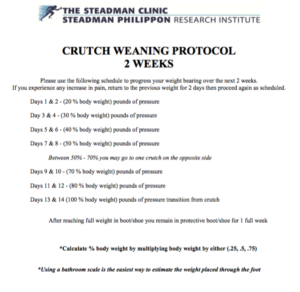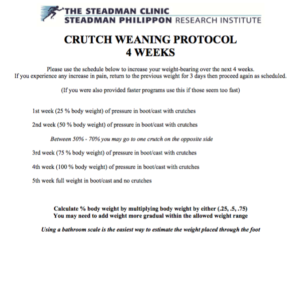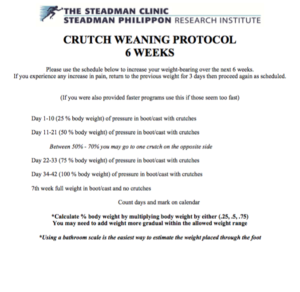Adding Weight to the Foot & Ankle After Surgery
Following ankle injury or surgery weight must be introduced gradually. This is done in order to prevent further or new injury. If weight is applied too fast it may cause damage to the injured/surgical site in addition to the potential of creating new problems. By gradually increasing weight your body is able to accommodate to see the new forces.
Items needed to do this included a bathroom scale, protective boot or shoe and standard crutches (in some cases a walker may be used). Patient’s that have used a knee scooter will need to use crutches for this transition.
Weight bearing typically happens over 2, 4 or 6 week period or sooner in some cases. This is determined by your physician based on your injury and healing status. You should follow closely to the instructions provided in order to avoid creating further issues by using the wrong protocol. In all cases as you progress through the stages there should not be any significant increase in your pain. If significant pain occurs we recommend remaining at your current level before progressing. It is natural to have slight increase in discomfort between stages as well as small increase in swelling. (In the event you were provided with 2 protocols, we recommend attempting the faster progression if you feel comfortable. If this protocol feels too fast the slower protocol may be used to avoid increases in pain.)
Use a bathroom scale to calculate your total weight. Then reference the percentage of body weight to be placed through the injured leg on your protocol. As you walk, the protective boot and crutches will work together striking the ground. Your arms and crutches will take the remaining load of the body that you are not placing through the injured leg at your current stage. We generally recommend becoming full weight-bearing in the boot prior to any of our boot weaning protocols.
Generally, when patients are placing between 50 and 75% of the weight on the injured leg they are able to transition to using 1 crutch or cane on the opposite side. It is often helpful for patient’s to mark the days on her calendar to help them follow progression accordingly.


